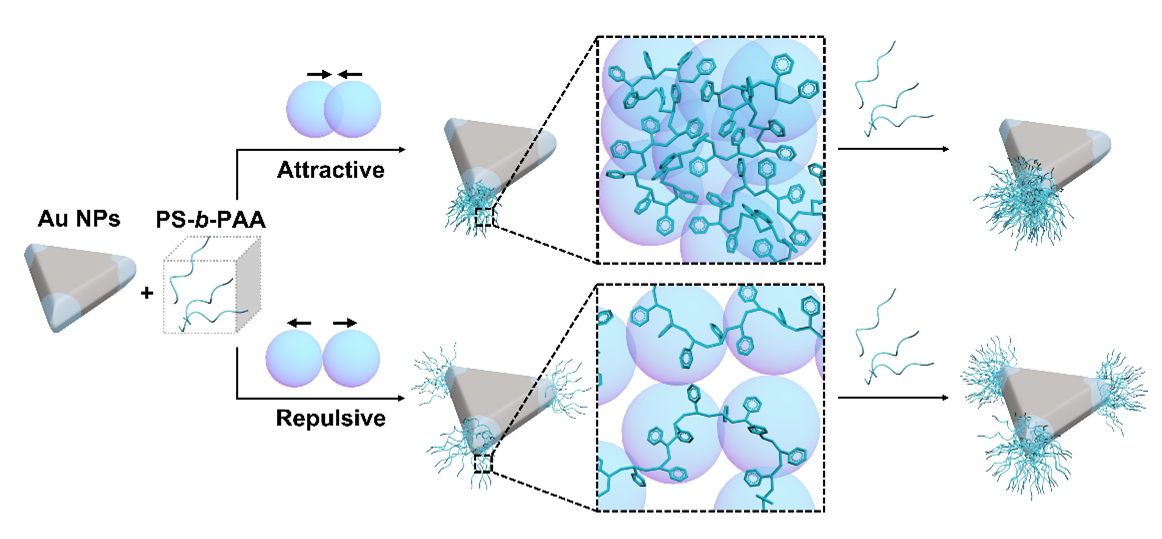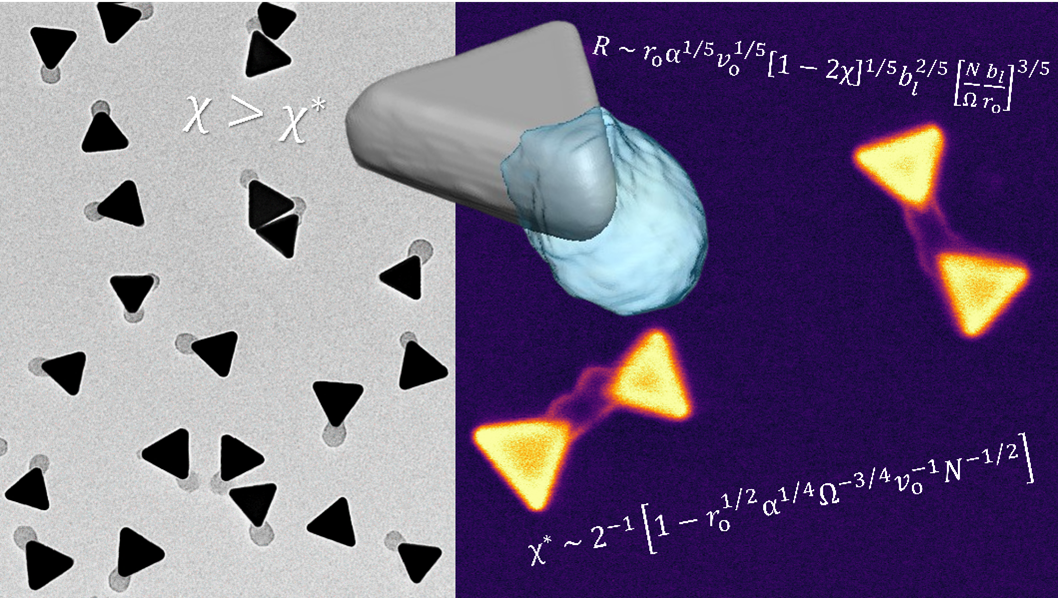Supramolecular “Bandwagoning”: Symmetry breaking in patch formation on nanoparticles
Published in Materials

Synthesizing patchy particles with predictive control over patch size, shape, placement, and number is a holy grail of nanoparticle (NP) research. For example, patterning of asymmetric patches underpins the structural complexity and functional diversity in biological systems, but has remained challenging in synthetic materials at nanometer precision. To fill these gaps, we developed a new strategy of asymmetric grafting, to pattern symmetry-breaking polymer patches on NPs, by rigorous integration with scaling theory concerning all complexities at the nanoscale.
The asymmetric grafting approach utilizes strong polymer‒polymer attraction to differentiate the grafting sites on NPs that are otherwise identical in shape and surface properties (Fig. 1). As a result, NPs can be decorated with polymer patches beyond the conventionally considered features of core NPs such as their exposed facets and local surface curvature. Unprecedented, symmetry-broken single-patch nanoprisms are achieved at a high yield at nanometer precision, in a one-pot preparation (Fig. 2, left).
 Fig. 1. Schematics of asymmetric grafting strategy by controlling polymer‒polymer interaction. Net attraction among polymers leads to asymmetric single-patch prisms (top), whereas net repulsive interaction leads to symmetric, tri-patch prisms (bottom).
Fig. 1. Schematics of asymmetric grafting strategy by controlling polymer‒polymer interaction. Net attraction among polymers leads to asymmetric single-patch prisms (top), whereas net repulsive interaction leads to symmetric, tri-patch prisms (bottom).
Quantitative agreements between experiment, theory, and simulation are observed at NP-level features such as the number of patches, as well as molecular characteristics like patch shape and size across both temperature and grafting density space. Our theory utilizes generalizable scaling parameters for polymers such as the correlation size and the Flory-Huggins interaction parameter χ rather than their specific chemistry, enabling generalizability to other hybrid materials systems.

Fig. 2. Single-patch prisms synthesized using asymmetric grafting strategy (Transmission electron microscope image and tomography reconstruction) and their self-limited assembly into nanobowties.
We show single-patch prisms can undergo self-limited assembly into bowties connected by tip patches that exhibit intriguing plasmonic coupling in finite-difference time-domain electromagnetic calculations (Fig. 2, right). The tip-to-tip distance of the assemblies is governed by the interpenetration of “soft” polymer patches, as also quantitatively predicted by our theory. The fundamental understanding established in this work can aid the a priori design of a library of asymmetric molecular patterns at nanometer precision, for applications in directed assembly, catalysis, delivery, active matter, and metamaterials.
For more details, please refer to Symmetry-breaking in patch formation on triangular gold nanoparticles by asymmetric polymer grafting | Nature Communications
Follow the Topic
-
Nature Communications

An open access, multidisciplinary journal dedicated to publishing high-quality research in all areas of the biological, health, physical, chemical and Earth sciences.
Related Collections
With Collections, you can get published faster and increase your visibility.
Women's Health
Publishing Model: Hybrid
Deadline: Ongoing
Advances in neurodegenerative diseases
Publishing Model: Hybrid
Deadline: Mar 24, 2026



Please sign in or register for FREE
If you are a registered user on Research Communities by Springer Nature, please sign in